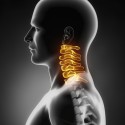A Nonsurgical Approach to the Management of Patients with Cervical Radiculopathy: A Prospective Observational Cohort Study
Objective: The objective of this study was to describe the clinical outcomes of patients with cervical radiculopathy (CR) treated nonsurgically after a diagnosis-based decision rule.
Methods: A prospective observational cohort study on consecutive patients with CR was performed. Data on 35 consecutive patients were collected at baseline, at the end of the active treatment, and at a minimum of 3 months after cessation of treatment. Disability was measured using the Bournemouth Disability Questionnaire. Pain intensity was measured using the Numerical Pain Rating Scale. Patients were also asked to self-rate their improvement.
Results: Complete outcome data were available for 31 of the 35 patients. Twenty-seven patients were reached for long-term follow-up. The mean number of months from last treatment to follow-up was 8.2 months.
Seventeen patients (49%) reported their improvement as “excellent” and another 14 (40%) did so as “good.” The mean patient-rated improvement was 88.2%. The mean percentage of improvement in the Bournemouth Disability Questionnaire score was 78%. The mean percentage of improvement in the Numerical Pain Rating Scale score was 72%.
Twenty-four of 31 (77.4%) patients had a clinically significant improvement from baseline to the end of treatment, and 25 of 27 (92.6%) had a clinically significant improvement from baseline to long-term follow-up.
Conclusions: The management strategy that we studied yielded favorable outcomes in this patient sample and appears to be a safe option for patients with CR. However, the absence of randomization and a control group limits interpretation with regard to clinical effectiveness. Randomized clinical trials are necessary to distinguish treatment effects from the natural history of CR.
